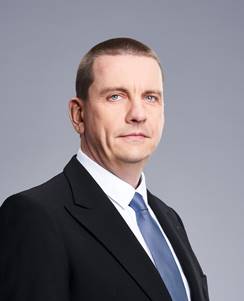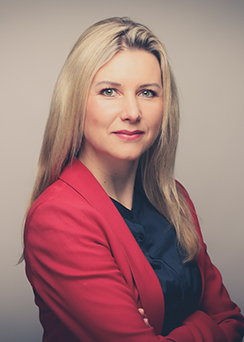Active REVCON Harmonic Filter
RHF-Active is a high efficient design used to avoid mains distortion caused by any non-linear load
RHF-Active is a high efficient design used to avoid mains distortion caused by any non-linear load

Ideally all loads and sources have a pure sinusoidal current waveform. But unfortunately the true waveform of most equipment is very different. Nowadays almost every load is a non-linear load. Typical examples are the power supply of a computer or the diode input bridge of a 6 pulse drive.
he impact of harmonic distortion is diverse, but the most typical effects are:
Find out more about the effects of harmonics in our Learning sector or visit our Webinar– Harmonic solutions for drives.
Active harmonic filters generally show significant differences in the used technology. The RHF-Active is giving up the conventional technology using IGBT Technology and relies on SiC technology (silicon carbide power modules).
This technology offers some advantages compared to the 3-level IGBT technology or even the 2-level IGBT topology.
In addition to this technological lead, the RHF-Active is delivered pre-configured for your application. This makes installation and commissioning easy.
The working principle of the RHF-Active is completely different from any other harmonic solution. Instead of working as a line filter with tuned passive filter circuits, the active solution is connected in parallel and injects harmonics. These injected harmonics are of inversed polarity and therefore eliminate the harmonics taken from the supply.
The RHF-Active may be used for pf correction, unbalance compensation, harmonic mitigation or altogether. It reduces the harmonic current distortion of non-linear loads and sources to any required THDi. This is necessary to reach various standards and recommendations, such as IEEE 519-2014.
1. Compensation of unknown harmonics.
A passive filter is always designed for a specific load with a specific harmonic spectrum. Our RHF-5P and RHF-8P, for example, are designed as filters for a drive. Active filters, on the other hand, can be used for many different loads. The composition of the harmonics can vary or even be dynamic. Our active harmonic filters are therefore ideal for eliminating the sum of different consumers with an unknown harmonic spectrum.
2. Decentralized compensation of harmonics
An active harmonic filter offers an enormous advantage for the compensation of a group of drives or as a retrofit installation. The filter can be installed at any point within the low voltage network and therefore the retrofit is significantly easier then adding passive filter. In addition the space requirement is usually significantly lower.
3. Avoidance of reactive power
Passive harmonic filters generally cause reactive power in the load range of 0- 30%. This is a disadvantage for systems that work permanently in this partial load range. The active harmonic filter does not cause any unwanted reactive power. And can therefore achieve a pf of almost 1, regardless of the load.
The RHF-Active is a particularly efficient harmonic filter and is based on SiC technology. We offer this technology for all service areas. Use our selection menu below and find more information about the product in the data sheet.
The RHF-Active can basically be used in any application. The filter can be used either directly on a frequency converter or as a central harmonic compensation on the feeder. Frequent applications are data-center, pumps, compressors or ventilations. These can be symmetrical 3-wire loads (3P3W) as well as 4-wire networks with single-phase loads (3P4W).
Harmonics damage over time, therefore an active harmonic filter is particularly useful when the load is continuous. Especially in applications where the ratio of the non-linear load compared to connection power is high. In these situations harmonic mitigation can be essential to avoid immediate damage.
Take a look at our references for further examples where RHF filters are already being used successfully. Here you will also find our test reports which shows the Filter in combination with the corresponding VFD.
If you have any questions, don’t hesitate to contact one of our colleagues!
Active Harmonic Filters are parallel filter circuits injecting harmonics into the supply. Based on the parallel topology, the required filter current is not equal to the load current.
The first digit in the type code of the RHF-Active identifies the corresponding nominal compensation current The RHF-Active 55-400-50-20-C is therefore designed for 55A compensation current. A de-rating of the VFD due to the voltage drop is not necessary using a REVCON RHF-5P or RHF-8P.
Following this equation based on existing THDi and input current, an estimated required harmonic filter current IHFC can be achieved.
 (please click here for derivation of the equation)
(please click here for derivation of the equation)
When improving the line current with an active filter, the mains voltage distortion will improve, which leads to a higher distortion of the load current. Therefore its recommended to add safety factor (1.062). This factor is based on experience and may differ significant depending on mains condition. The factor is based on RHF-Active filter with SiC technology. Using the 3-Level IGBT a factor of 1,071 should be used.
In order to calculate the required harmonic current, the IRMS of the load is required. Most frequently used non-linear-load is a VFD. The designated input current stated by the VFD supplier are typically referring to the maximum possible input current. This may differ significant mainly depending on mains voltage. Input currents found in the following RHF-Active design guide, can be used as a estimation of the input current based on motor load and corresponding voltage. The calculated values are based on Motors with IE3 efficiency or higher. Motors with lower efficiency will likely cause higher input currents. The results shown in the tables are indicating the required compensation current. In order to calculate the required filter current the factor 1,062 (SiC) or 1,071 (3-Level IGBT) should be used.
Für die Berechnung des Filterkompensationsstromes, wird der Nennstrom der Last IRMS benötigt. Die relevanteste nichtlineare Last sind Frequenzumrichter. Hersteller von Frequenzumrichter geben typischerweise den
Input currents calculated in the RHF-Active Design Guide are All values are approximations and are not a suitable for substitute of a harmonic analysis
Further information on individual sizes are listed in the datasheets. Please select your parameter.
In our panels we combine harmonic filter up to 1500A in IP40-IP55. Specific requirement and customization can easily be added. Please contact m.elvhage@revcon.de for further information on this range.
If you can´t find your preferred filter above, please don´t hesitate to contact us. Due to our wide portfolio and long experience we are able to offer customized solutions for any application.
![]() RHF Active Commissioning guide
RHF Active Commissioning guide
Please contact our team to receive the latest version of the RHF-Active software. info@revcon.de
Your contact person Mr. Martin Elvhage,
can be reached at: +49 (0)2383 920 22 32
or send your enquiry by e-mail
to: m.elvhage@revcon.de

Dipl.-Ing. Frank Rambuscheck
Techn. Geschäftsführer
Tel: +49(0) 2383/92022-22
E-Mail: F.Rambuscheck@revcon.de

Mareike Hrubesch-Fondacaro
Kfm. Geschäftsführerin
Tel: +49(0) 2383/92022-22
E-Mail: M.Hrubesch-Fondacaro@revcon.de

Markus Damasch
Geschäftsleitung Projekte
Prokurist
Tel: +49(0) 2383/92022-19
E-Mail: M.Damasch@revcon.de

Martin Elvhage, B. Eng.
Business Development Manager – Applikationsberatung
Tel: +49(0) 2383/92022-32
E-Mail: M.Elvhage@revcon.de

Stanley Ng
Managing Director (APAC)
Stanley@revcon.com.sg
+6562660523

Beaujolais Ng
Technical Engineer - Responsible for technical questions
beaujolais@revcon.com.sg
+6562660523
Beacher Ng
Account Admin Assistant – Responsible for offer and accounts
beacher@revcon.com.sg
+6562660523
Bitte füllen Sie die mit einem einem Stern * markierten Felder aus.
Bitte füllen Sie die mit einem einem Stern * markierten Felder aus.
Bitte füllen Sie die mit einem einem Stern * markierten Felder aus.
Bitte füllen Sie die mit einem einem Stern * markierten Felder aus.
Ihren Ansprechpartner Herrn Martin Elvhage, 
erreichen Sie unter: +49 (0)2383 920 22 32
oder schicken Sie Ihre Anfrage per E-Mail
an: m.elvhage@revcon.de
Your contact person Mr. Martin Elvhage,
can be reached at: +49 (0)2383 920 22 32
or send your enquiry by e-mail
to: m.elvhage@revcon.de